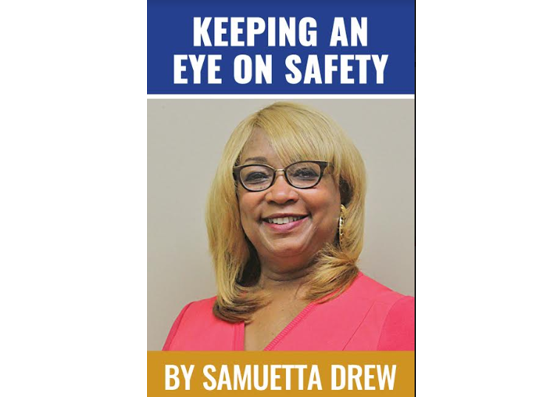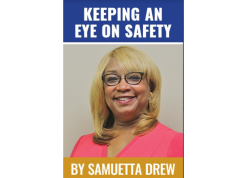By Samuetta Hill Drew
I awoke a few days ago and began looking at the national news on television which is a part of my usual daily routine. Starting the day being aware of global, national, and local news occurrences I may have missed while asleep is important to me. To my surprise and dismay, one of the lead news stories for the morning featured the recent burning of three historically black Baptist churches located in St. Landry Parish in Louisiana. The church burnings all occurred within a 10-day span and all three churches were over 100 years old.
Unfortunately, my mind immediately became engaged in “mind travel” back to the Civil Rights Era when black churches were often targets of hate crimes. It was reminiscent of crimes perpetrated in my own state. Therefore, I adjusted my topic this week to discuss a few safety steps churches could implement for their safety, both during and after worship services.
Let’s begin by stating churches are very much like schools in that they both are soft targets. Even though churches fall into this category, there are some aggressive safety steps churches could do like schools to help prevent from being a vulnerable unprotected target.
A strong safety mindset from the leadership on down is essential. This sounds simple yes. When in reality it is not. Safety is a topic everyone believes is important, but few really understand the value added when it comes to wanting to invest time, resources and/or funding. Many have the mindset that our church is in a good community or the most common “it will never happen to us” syndrome.
If your church does not have an active safety team, speak with your pastoral leader about the importance of developing one. The best place to start is by identifying professional talent within your church. This will help formulate a strong team to begin the process of organizing, planning and ultimately protecting your church.
Roles should be assigned in cases of emergency. Who will contact the first responders when necessary should be addressed. This person should contact the first responder’s office or precinct to introduce themselves and share their assigned duty. A list of all these pertinent contacts should be readily available in a location familiar with the team.
The team should assess the need for security equipment to adequately monitor the church during and after hours. The cost will more than pay for itself because the safety of one’s property and life is priceless. Cameras should be strategically placed both inside and out based upon the design of your church’s campus. Training of key church groups should be conducted also such as ushers, officers, etc. This training should be done by trained professionals.
There are many other safety steps to be considered, but this is a great place to start. I certainly hope anyone reading this article who believes their church needs to Keep a better Eye on Safety will speak with their pastor about putting the initial steps in place. This means next time I hear a news story of this type (hopefully never again), where a black church has been the target of a hate crime, the story will end with this statement “the police have arrested the suspects.”





